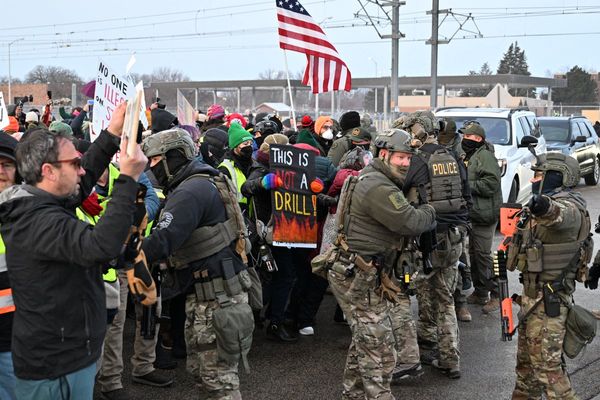From the back seat of a helicopter, small white capsules are being dropped down a plastic tube to the rainforest floor in north Queensland.
Within a matter of seconds, the capsules burst into flames, starting spot fires all over the pristine mountain ranges in the Whitsundays.
But as the smoke plumes rise, there is not a feeling of despair or urgency, rather a sense of calm and satisfaction.
The area, known for its rugged outcrops and eucalypt forest, is continuing to recover after being battered by Tropical Cyclone Debbie in 2017.
Part of that recovery is reducing fuel loads and decreasing the risk of a major bushfire.
Fire in the sky
Traditional burn-offs have been done on the ground, but in inaccessible country like within the Proserpine State Forest, the effort needs to be from the sky.
"The capsules act as an incendiary device … so, it's just a chemical reaction that results in ignition after about 30 seconds," natural resource management ranger Lea Ezzy said.
As the chopper hovers over the treetops, the pierced capsules, sometimes known as Dragon Eggs, fall down a tube and to the ground, sparking spot fires to create mosaic burns across the park.
Tried and tested
Before the first capsule is dropped over the area, a number of capsules are tested to make sure the machine is working correctly.
All six of the capsules tested crackle and burn, bringing a smile to the face of Michelle Brook from Queensland Parks and Wildlife Service.
"We buy the capsules and use them within 12 months, but if they've been stored or the humidity is a bit of a killer on these things, it can break down the plastics.
"But we've got 100 per cent ignition on the test and we can expect the same up there."
During a pre-flight briefing, atmospheric conditions are checked and plans confirmed.
Equations are done to determine the drop rate of capsules to achieve the desired burn, taking into account the area's fire history.
It is a highly technical exercise, with GPS coordinates marked on a digital map to mark the exact locations where the capsules will be dropped.
"We share these with Don [the pilot], and he can upload them to his system, and he can follow along as he's flying … it takes the guesswork out of it," Ms Brook says.
A place for fire
Following the Black Summer bushfires of 2019-2020, there has been much discussion in the community about the use of fire to reduce the risk of catastrophic events.
Lea Ezzy, from Queensland Parks and Wildlife Services, says "it's a shame that it's taken events like those terrible bushfires to shift attitudes".
"It's about reintroducing fire into a community where fire belongs and plays a role."
Ms Ezzy acknowledges that there are still some in the community who are not comfortable with controlled burns being conducted so close to their properties.
"We come and talk to all of the neighbours and tell them what we going to do and where we propose to burn," she said.
"I find lots of people have very strong opinions about fire management, but in northern communities there's a good understanding of fire.
"They're supportive of it, particularly pastoralists who obviously don't want fires from national parks coming across onto their country."
A mosaic tapestry in the forest
The burn patterns are set up to ensure the country is not simply razed by fire.
"Mosaic burning is essentially trying to replicate what happened in the old days with Aboriginal traditional burning," Ms Ezzy says.
"Lower-intensity, patchy burns break up the landscape and reduce the risk of late season bushfires.
"By burning patchily you're not really displacing lots of wildlife and you're giving an opportunity for vegetation to re-sprout and re-seed."
She says the overall aim is not to eliminate fires but to reduce their scale.
"The really rewarding side of it is seeing that fine-scale mosaic building over time and seeing threatened species that are threatened by large-scale fire persisting and making a comeback," Ms Ezzy said.
As well as helping manage the landscape, it is hoped burns such as this help bring a level of understanding about fire.
Ms Ezzy does not think people should be fearful of it.
"Everyone should have respect for what fire can do in certain places, in certain times of the year," she said.
"I think that there should be a level of comfort that people should feel when they start to see smoke popping up.
"Shifting that perception to the point where the broader community sees smoke and go, 'Oh good, Parks is burning,' and there's a real comfort and confidence with that."
Editor's Note 1/06/22: This story and the accompanying video have been amended to remove references to chemicals used in the process.







